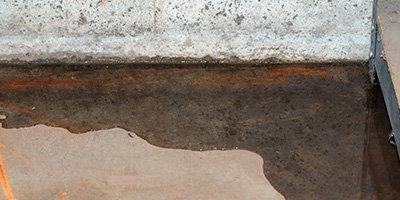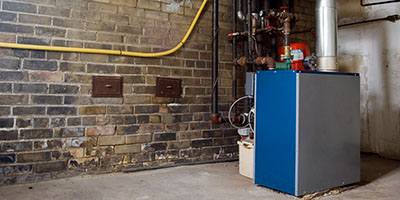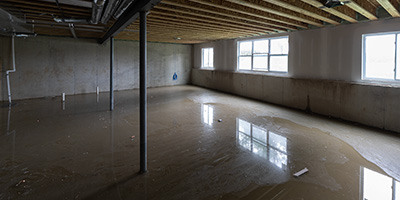Tips to Prevent Water Damage in Your Home

How to Protect Your Home From Water Damage
Water damage from leaks and floods is often unexpected and costly. While many homeowners have savings set aside for regular home maintenance and rainy-day funds, water damage repairs aren’t something most people budget for.
Luckily, you’re not defenseless. In this post, we’ll give you five effective ways to protect yourself (and your wallet) from home water damage.
Common Signs of Water Damage
Water can pool inside walls, underneath roofs and in basement corners, leaving unpleasant marks and stains in its path. However, some water damage signs aren’t as easy to spot, especially if you haven’t experienced a flood and your pipes aren’t leaking. If one or more of the following sights and smells appear in your home, water damage prevention should be a top priority:
- Sagging walls or ceiling tiles
- Warped floors
- Wall or floor stains
- Peeling paint
- Musty smells throughout your home
- Mold spots on your walls or floors
- Standing water in your yard following a storm
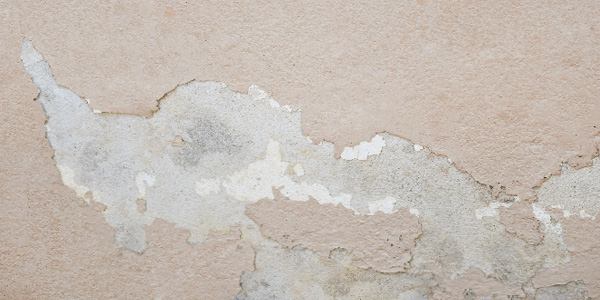
What Causes Water Damage?
If you’ve found puddles or leaks in your home, you’re probably wondering how they got there in the first place. Identifying the source of water damage can be tricky, as it could be the result of an intense thunderstorm, a faulty kitchen appliance or many things in between. While the possibilities are widespread, here are the most common water damage causes:
- Extreme weather, such as thunderstorms or floods
- Pipe bursts and leaks
- Malfunctioning dishwashers and washing machines
- Cracks in your walls or home foundation
- Missing shingles, cracked flashing and other roof damage
- Drainage problems on your property
- Ongoing HVAC issues
Now that you know the causes and signs of water damage, it’s time to learn how to prevent it.
5 Ways to Protect Your Home From Water Damage
1. Inspect Your Roof
Your roof is the only thing protecting you, your loved ones and your belongings from a downpour. But once deterioration starts, it can go undetected until real issues arise. Stop water damage in its tracks by inspecting your roof before and after a thunderstorm hits.
You can never be too thorough when checking out the roof – use a pair of binoculars to identify even the smallest foundational splits and cracked flashing. Missing shingles aren’t the only things to look out for!
2. Clean Your Gutters
Having clean gutters is essential in preventing water damage. Poor drainage can weaken your home’s foundation, causing cracks and giving rainwater a clear path to your basement and living room walls.
Can’t remember the last time you cleaned your gutters or downspouts? Now is the time. On average, it’s best to clean your gutters at least twice a year – and even more frequently if you live a storm-prone area. Heavy winds can stuff your drains with wet leaves and branches, which should be removed ASAP to prevent sagging or overflowing gutters. If ignored, your drainage system will become ineffective, as nothing will protect your walls from water damage.
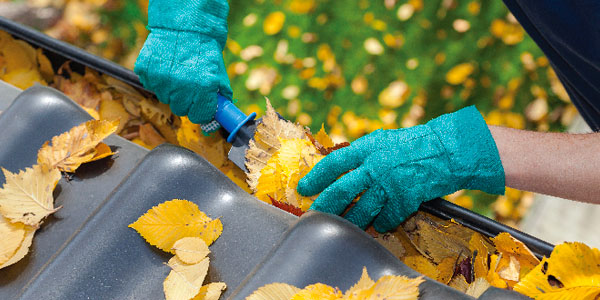
How to Clean Your Gutters
- Start working near a downspout.
- Get rid of branches, twigs, leaves and other bulkier debris with a towel. (You can also use your hands, but be sure to wear gloves!)
- Use a garden hose to flush your gutters and downspouts.

Pro Tip: Install Gutter Guards
Spare yourself an in-depth gutter cleaning by installing guards so you can easily clear debris away. With guards, leaves and twigs will gather on top of your gutters, rather than building up and clogging your drainage system. There are different options too, with nylon, mesh and reverse curve being the most popular. Pricing depends on the type of gutter guards you want and how many feet you need covered.
3. Caulk and Seal Your Windows
If windows or doors are the source of your water leaks, it may be a sign that they need to be replaced. But if they’re in relatively good shape already, resealing your windows with caulk will help prevent future water damage. You can also use caulk around your faucets, bathtubs, ceiling fixtures and other plumage points to avoid additional home water leaks.
How to Apply Caulk
- Choose a caulk that lasts: To ensure your windows and faucets don’t spring a leak, choose a 100% silicon seal. Unlike acrylic caulk, silicon is flexible, crack-proof and water-resistant. The key to avoiding home water damage is in the caulk.
- Clean the area: Use a caulk-removing tool to clear the area of old particles and debris before applying a new layer.
- Get your caulking tools ready: Insert a tube of caulk into your caulking gun and start sealing away. Try to squeeze with even pressure so you have control of the tool and avoid making a mess. Remember – silicon caulk is permanent, so be careful.
- Smooth the seal: After applying caulk where it’s needed, use a smoothing tool to spread it around evenly. Try to seal every crevice in your walls and windows to deter future water damage.
4. Check Your Pipes
In general, you should inspect your pipes at least once a year. They should be checked out more frequently, though, if you live in a wet or cold climate. Pipes will decay and often become rusty and corroded after years of wear, eventually causing home water leaks. In extreme cases, deteriorated pipes can lead to flooding or an influx of raw sewage. As you can imagine, these water damage repairs are costly and time-consuming.

Pro Tip: Consider Installing an Emergency Pressure Release Valve
If your winters are especially brutal, installing a pressure release valve will save you time, money and effort on future upkeep and repairs. By making this addition to your plumbing system, you’ll relieve frozen pipe pressure, potentially avoiding future bursts and water damage.
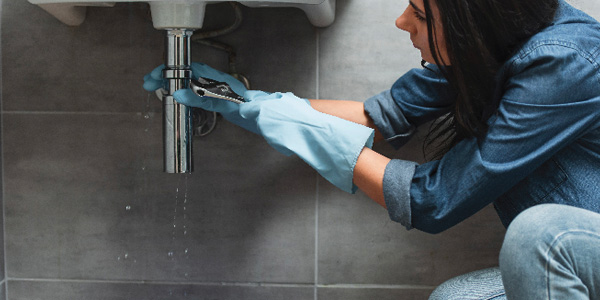
5. Test Your Sump Pump
The sump pump is your first line of defense against basement floods. Rather than pooling on the floor or behind basement walls, rainwater will gather in a basin and pump into a municipal storm drain or dry well.
How to Test a Sump Pump
- Find the outside pipe where water exits your home. If it’s stuffed with leaves or excess dirt, give it a good cleaning.
- Locate your basement’s sump pump and make sure it’s plugged into a functioning outlet.
- Clear any dirt or debris underneath your sump pump’s lid, if it has one.
- Pour approximately 5 gallons of water into the basin of your sump pump. Continue to pour slowly and evenly, until you see it turn on and pump water.

“You actually can never prevent plumbing leaks. It's impossible. But what you can do is be aware of what is going on in your own home. Regularly inspect it yourself. Go through the basement, look up under drop ceilings, crawl through your attic, etc. The faster you catch a leak, the better. Especially since water leaks are often followed by mold problems.”
Nick Gromicko, InterNACHI
How Do You Repair Water Damage in the Home?
If you’re not a handyman or have never experienced home water damage, consider calling a contractor for serious repairs. While it’s easy to repaint walls and polish ceiling tiles, let a professional lend their expert opinion on yard drainage, HVAC problems and foundational issues, since these fixes can quickly become urgent and expensive.
Fortunately, most obvious water damage signs can be easily fixed. There are many ways to repair your roof, walls and pipes without calling for outside help. But the most efficient way to avoid repairs is to prevent water damage from happening altogether.
How to Prevent Water Damage in the Future
When it storms, staying dry should only be a concern if you’re heading outside. By looking out for the common signs and taking these preventative steps regularly, you can rest easy knowing your home is protected from water damage.

